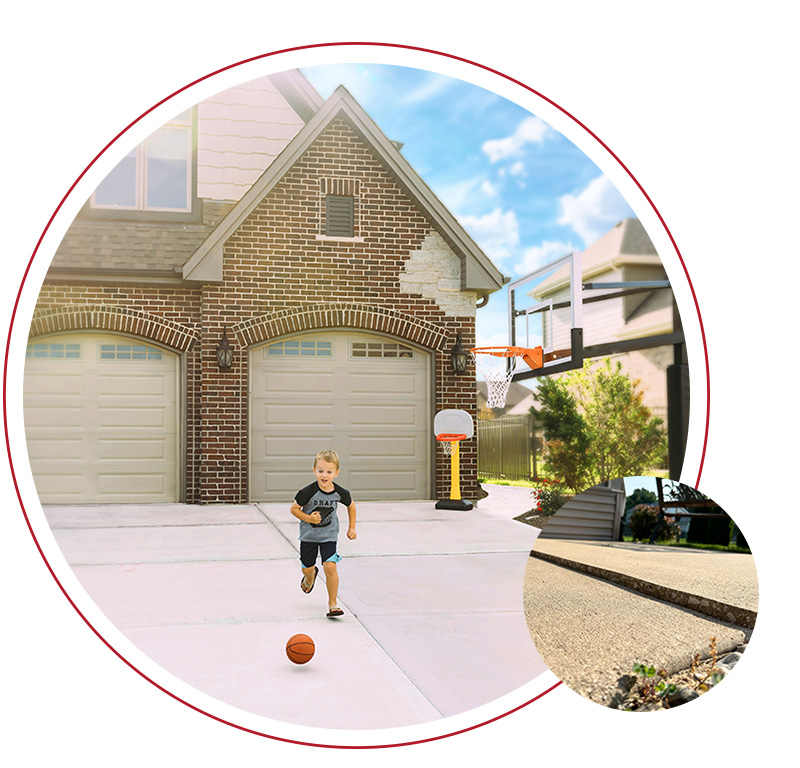Providing your email address will keep you updated should we need to provide updates specific to your location.
Concrete Repair and Maintenance Services
Just the right mix of services to repair, preserve, and upkeep your concrete — while saving you money at the same time.

You Deserve Great Concrete
Save time, money, and stress with custom concrete repair and maintenance solutions tailored to your unique needs. Here at A-1, we’ve got your back on everything from eliminating trip hazards to preserving and protecting your concrete for long-term savings.

Your Concrete Repair Solutions
There’s no one-size-fits-all solution to concrete repair and maintenance, which is why your A-1 expert will help you find the right mix of services for your unique goals.
Hear from past A-1 Customers
"My sidewalk was a hazard. The slabs were all uneven causing a trip hazard and water running toward my house. The guys were fast, courteous, hard-working and professional. They got the slabs level and cleaned up all good as new."
- Melissa Abernathy from Muncie
"Ryan and his team were fabulous to work with. I’ve always been curious about the process and was blown away by the work they did. They exceeded my expectations and I made sure to take before/after photos. I highly recommend A1 Concrete Leveling!"
- TK from Pittsburgh
"Company performed miracles with the mess of raised and sunken driveway and garage slabs here. Guys were very knowledgeable, helpful and efficient. Everything cleaned up and you'd never know anyone was here-except for the leveled slabs!! Wonderful company from start to finish!!!"
- Sandy O'Connor from Amherst
How It Works
Here’s how easy concrete repair and maintenance can be:
Schedule Your Free Estimate
Request a free onsite estimate to see how affordable custom concrete care can really be.
See Your Concrete Come to Life
Watch dirty, cracked concrete get a face lift, or see sunken slabs float back up where they belong.
Enjoy Your New (Old) Concrete
Do a happy dance because your existing concrete is repaired, protected, and looks better than ever.
Concrete Repair & Maintenance FAQs
We’ve got you covered with the answers to some of the most frequently asked questions about our services.
How long does a concrete leveling repair last?
As long as the soil under the concrete has finished settling and nothing is eroding away the concrete leveling repair, concrete leveling can last for the life of the concrete itself.
Related Resource: How Long Does Concrete Leveling Actually Last?
How long does concrete caulking take?
Concrete caulking as a standalone service usually takes a few hours to complete, depending on the size of the repair. It is often done at the same time as concrete leveling and/or cleaning and sealing services which can make the process more efficient.
What does concrete look like after being sealed with penetrating concrete sealer?
Penetrating sealer typically does not change the look or texture of the concrete itself. How the concrete looks after being cleaned will be how the concrete looks after being sealed with a penetrating sealer.
Related Resource: What Will Your Concrete Actually Look Like After Applying Penetrating Sealer?
How often should I clean my concrete?
How often you’ll need to clean your concrete depends on where you live and your concrete’s exposure to things like leaves, sediments in the air, and sunlight.
You should always clean your concrete before you seal it.
Concrete Academy
Your one-stop shop for unbiased insights into all things concrete – from experts who have seen it and done it before.
Take Back Your Concrete
Forget replacement and enjoy your concrete again with custom repair and maintenance solutions. Request an estimate now and our team will reach out to you within one business day.